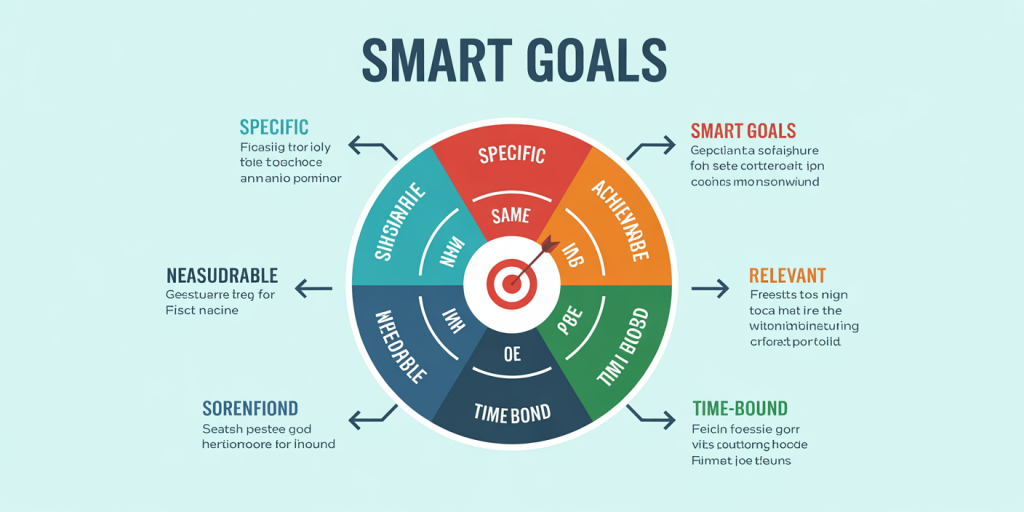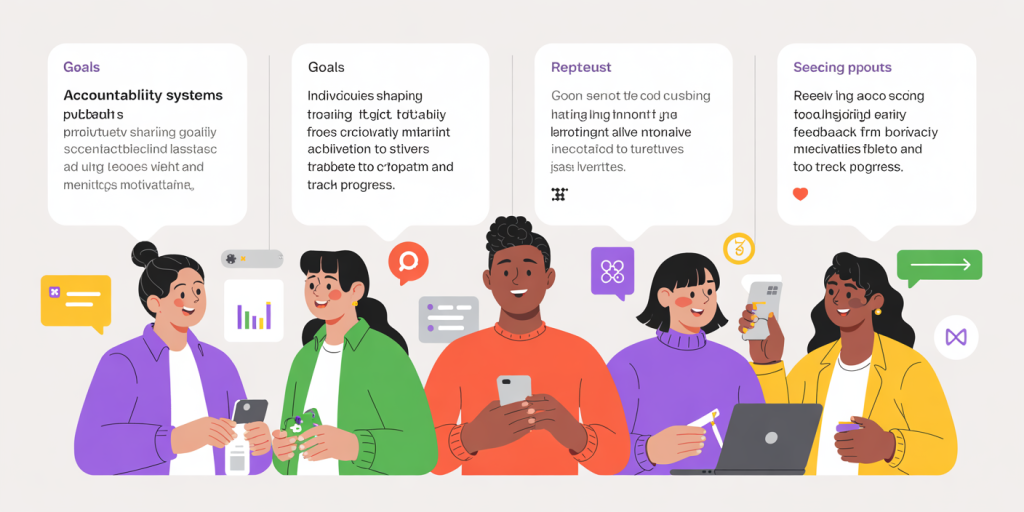How to Set Goals You’ll Actually Achieve
Setting goals is an essential skill that can significantly enhance your personal and professional life. However, countless individuals struggle to accomplish the goals they set, often due to unrealistic planning, lack of focus, or insufficient motivation. According to a 2019 survey by Statistic Brain Research Institute, only 8% of people achieve their New Year’s resolutions, highlighting how challenging it is to follow through on goals consistently. This article explores effective strategies and practical steps to set goals that are both achievable and meaningful, ensuring you make tangible progress towards your ambitions.
Understanding the Science Behind Goal-Setting
The psychology of goal-setting reveals that the clarity and structure of your goals significantly impact your likelihood of success. Research by Locke and Latham (2002), renowned psychologists specializing in motivation, discovered that specific and challenging goals lead to higher performance than vague or easy goals. This concept debunks the myth that vague motivational phrases alone—like “try harder” or “do your best”—can drive success.
One practical example is the difference between saying “I want to get fit” and “I will run three times a week for 30 minutes.” The latter is precise, measurable, and time-bound, which are critical qualities of effective goals. Structuring goals around well-established principles helps maintain focus and enables progress tracking, increasing your chance of completion.
Using the SMART Framework for Effective Goal Planning
One of the most widely accepted methodologies for goal-setting is the SMART framework, which stands for Specific, Measurable, Achievable, Relevant, and Time-bound. Each element ensures that goals are clear and actionable. Specific: Goals should answer the “what,” “why,” and “how” questions. Measurable: You need criteria to track your progress. Achievable: Set realistic goals that push you but are attainable. Relevant: Goals must align with broader ambitions and values. Time-bound: Defining a timeline creates urgency and focus.

For example, if someone’s aim is to boost sales in their small business, a SMART goal could be: “Increase monthly sales by 15% over the next six months through targeted social media advertising.” This goal is concrete, measurable through sales figures, realistic given budget and market research, aligns with business growth, and bound by a six-month deadline.
| SMART Criterion | Description | Example |
|---|---|---|
| Specific | Clear and detailed | Increase monthly sales through social media |
| Measurable | Quantifiable progress indicators | 15% increase |
| Achievable | Feasible given resources | Budget allocated for advertising |
| Relevant | Aligns with broader objectives | Business growth |
| Time-bound | Defined deadline | Next six months |
Adopting the SMART framework helps transform vague ambitions into actionable steps that encourage commitment and persistence.
Breaking Down Big Goals Into Manageable Steps
Large-scale goals can feel overwhelming, which often leads to procrastination. Breaking these goals into smaller, manageable tasks can mitigate this problem and provide a clearer path to success. This approach makes progress more tangible and less intimidating.

Consider the case of Jane, an aspiring author who wants to write a book. Instead of stating, “I want to write a book by next year,” Jane can divide the goal into writing 500 words daily, outlining chapters weekly, and completing first drafts monthly. This incremental process breaks the intimidating task of writing a full book into achievable daily and weekly activities, anchoring motivation and providing a sense of accomplishment at every stage.
Data from a study published by the American Psychological Association (APA) supports this approach: breaking large goals into sub-goals increases persistence by 45%. When you recognize progress through small wins, your brain releases dopamine, reinforcing motivation and productivity.
Creating Accountability and Support Systems
Accountability mechanisms significantly improve goal attainment. A 2015 study published in the *Journal of Applied Psychology* found that individuals who shared their goals publicly were 65% more likely to complete them than individuals who kept their goals private. Creating external accountability involves sharing your goals with someone you trust, joining peer groups, or using digital tools that track progress.

For example, accountability partners can be colleagues, friends, or mentors who regularly check on your progress and provide encouragement or constructive feedback. Similarly, platforms like Habitica gamify daily habits by providing social accountability and reward systems to keep users engaged.
Another strategy is logging progress in journals or apps such as Trello or Asana, which visually display milestones and deadlines. These systems provide tangible evidence of advancement and can highlight areas needing adjustment long before failure becomes imminent.
| Accountability Strategy | Description | Effectiveness |
|---|---|---|
| Sharing goals publicly | Inform friends, family, or colleagues | Increases commitment by 65% |
| Accountability partners | Regular check-ins with trusted individuals | Provides feedback and motivation |
| Digital tracking tools | Use habit and project management apps | Visual progress aids persistence |
Through these methods, accountability becomes a powerful motivator in transforming intentions into reality.
Handling Obstacles and Adjusting Goals Dynamically
Setbacks are inevitable when pursuing goals. The ability to adapt by reassessing and adjusting goals without abandoning them is crucial for long-term success. Flexibility can prevent frustration and burnout, which are common reasons for goal abandonment.
Consider Tom, a marketing executive aiming to increase client engagement by 40% in six months. After three months, data shows only a 10% increase. Instead of giving up, Tom analyzes what strategies worked and what didn’t, shifting focus toward more effective content marketing while lowering the initial target to 30%, which is still ambitious but more realistic.
This dynamic approach encourages analytical thinking rather than emotional discouragement. Psychological research points to “goal flexibility” as a key predictor of resilience and continued effort (Carver & Scheier, 1998).
In practice, this means monitoring progress regularly, reflecting on challenges, and being willing to recalibrate goals to maintain motivation while considering changing circumstances. A rigid “all or nothing” mindset, by contrast, often leads to premature disengagement.
Leveraging Future Perspectives: Setting Sustainable Goals for Continuous Growth
Looking forward, cultivating sustainable habits around goal-setting will be vital for personal development and professional advancement. The changing landscape of work—marked by remote teams and constant technological innovation—demands agility, clarity, and commitment in goal management.
Emerging trends suggest combining traditional goal-setting frameworks with new technology-driven solutions. Artificial intelligence tools that recommend adaptive learning goals, virtual mentors, and personalized reminders will help individuals stay aligned with evolving priorities.
Furthermore, the growing emphasis on mental well-being and work-life balance encourages setting goals that foster holistic growth rather than purely achievement-centric objectives. Sustainable goal-setting means integrating long-term visions with everyday practices. An example is incorporating mindfulness and rest as essential “performance goals,” ensuring productivity does not come at the cost of burnout.
Investing in continuous education on effective goal management, such as workshops and coaching, can build lifelong skills. Organizations also benefit by aligning employee objectives with corporate strategies through transparent performance metrics and supportive feedback cultures.
Combining data-driven insights, psychological principles, and innovative tools, the future of goal-setting promises enhanced efficiency and fulfillment across all domains of life.
—
Setting goals you’ll actually achieve is less about willpower and more about applying proven strategies to craft clear, actionable, and flexible plans. Utilizing frameworks such as SMART, breaking down sizable ambitions into manageable steps, establishing accountability systems, and adjusting dynamically to challenges ensures sustained progress. Forward-looking perspectives confirm that integrating technology, sustainability, and well-being into goal-setting practices will empower you to reach your potential consistently and confidently. By refining how you set goals, you build the foundation for a successful and balanced future.
